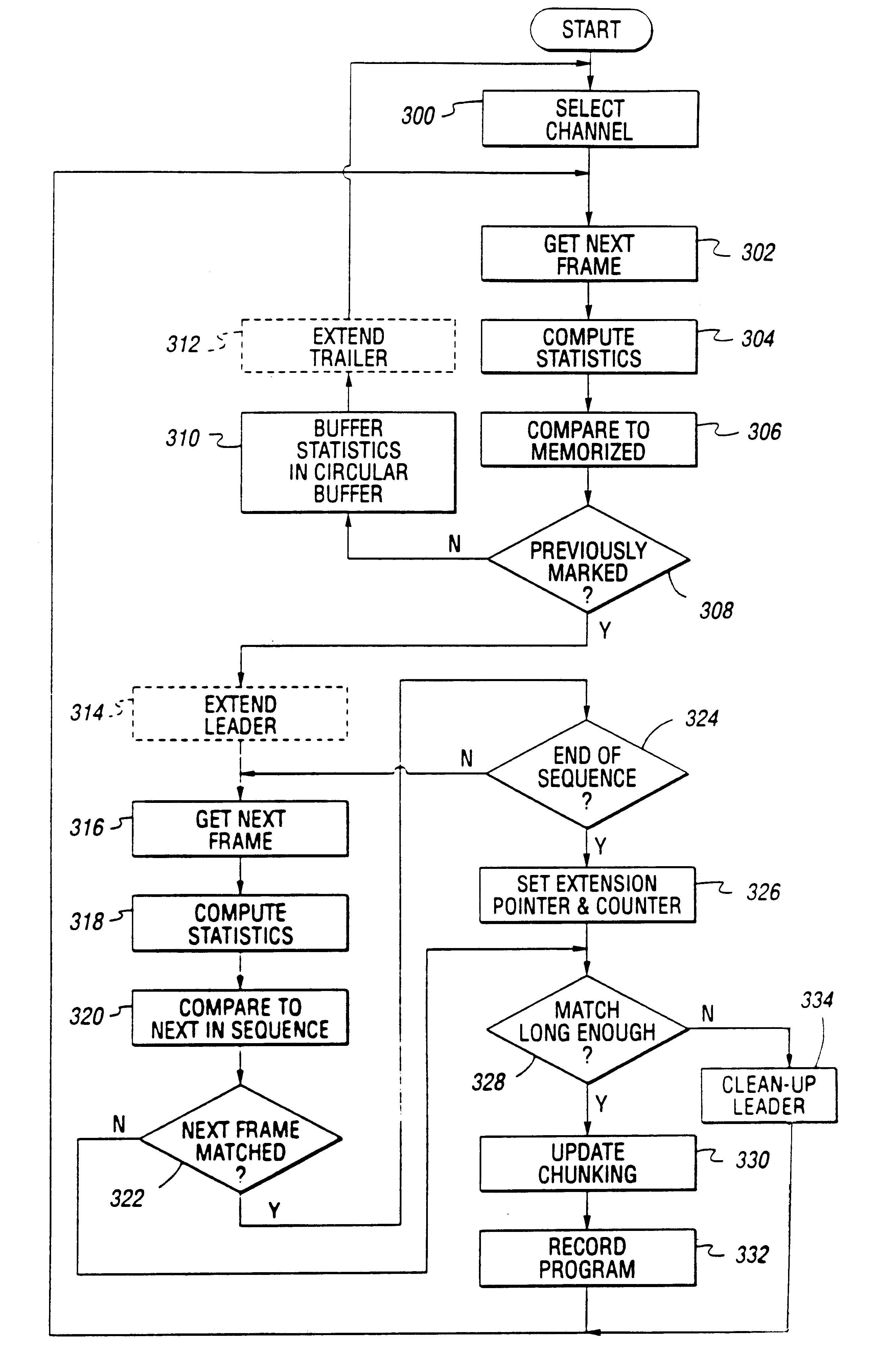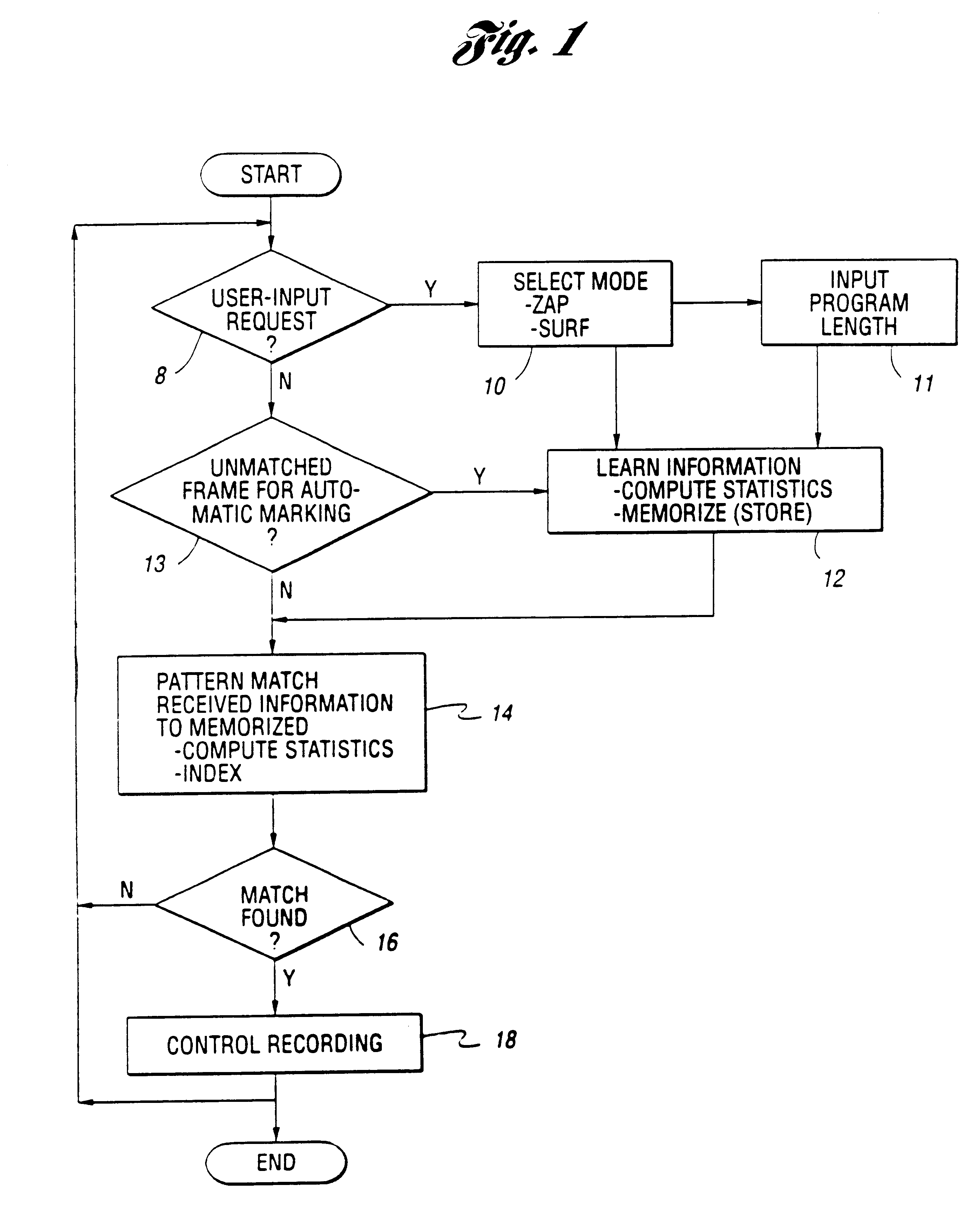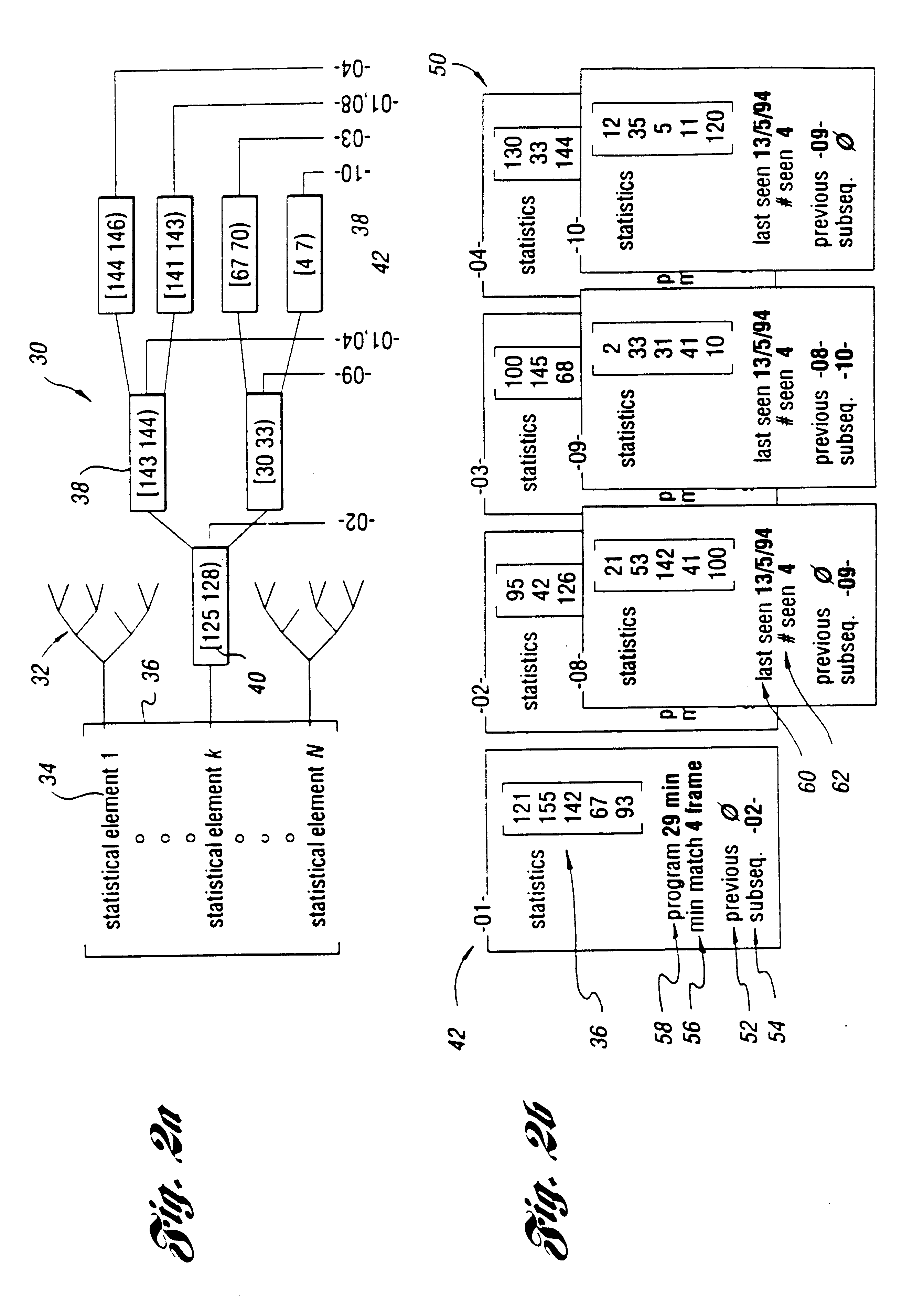System and method for selective recording of information
a selective recording and information technology, applied in the field of system and method for selective recording of information, can solve the problems of not being easily adaptable to other forms of information, limiting the type of programs seen by the decoding receiver, and limited the use of the system with video, so as to reduce or eliminate the possibility of false detection
- Summary
- Abstract
- Description
- Claims
- Application Information
AI Technical Summary
Benefits of technology
Problems solved by technology
Method used
Image
Examples
Embodiment Construction
It should be recognized that the flowcharts presented in FIGS. 1 through 9 in describing the present invention depict sequential processing of the method steps although any of a number of processing strategies could be utilized without departing from the spirit or scope of the present invention. For example, if the control logic is implemented in hardware, many of the method steps may be performed simultaneously or nearly simultaneously. Similarly, an interrupt driven processing strategy could also be utilized to achieve the objects and advantages of the present invention. One of ordinary skill in the art will also recognize that the concepts of the present invention may obviously be extended to a corresponding parallel implementation without departing from the spirit or the scope of the present invention. Similarly, a combined sequential / parallel implementation utilizing hardware and / or software to accomplish one or more of the objects and advantages of the present invention is wit...
PUM
| Property | Measurement | Unit |
|---|---|---|
| period of time | aaaaa | aaaaa |
| period of time | aaaaa | aaaaa |
| time | aaaaa | aaaaa |
Abstract
Description
Claims
Application Information
 Login to View More
Login to View More - R&D
- Intellectual Property
- Life Sciences
- Materials
- Tech Scout
- Unparalleled Data Quality
- Higher Quality Content
- 60% Fewer Hallucinations
Browse by: Latest US Patents, China's latest patents, Technical Efficacy Thesaurus, Application Domain, Technology Topic, Popular Technical Reports.
© 2025 PatSnap. All rights reserved.Legal|Privacy policy|Modern Slavery Act Transparency Statement|Sitemap|About US| Contact US: help@patsnap.com



